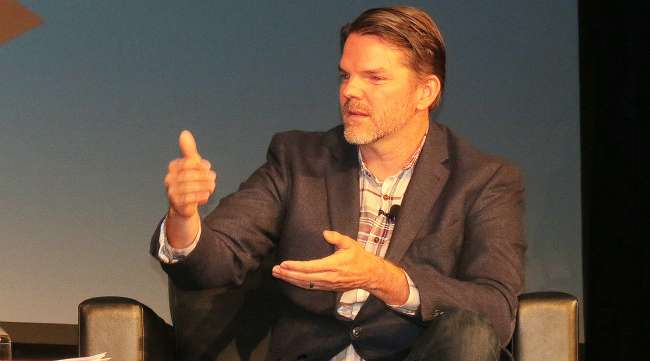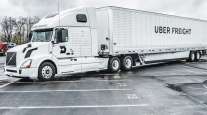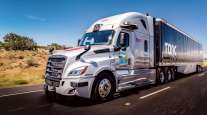Managing Editor, Features and Multimedia
Uber Freight’s Push to Streamline Trucking Hinges on Fixed Rates, Speedy Execution

LONG BEACH, Calif. — Uber Freight’s push to automate trucking transactions hinges on a fixed pricing model designed to eliminate bidding and phone calls and enable on-demand truck capacity for shippers.
Since launching its mobile app in May, the new business unit of ride-hailing giant Uber Technologies Inc. has been working to build a freight platform where truck drivers can quickly book loads by touching a button on their smartphones while shippers can post a load and secure a nearby truck within five minutes.
“We are firm believers that technology can make this market work more efficiently,” Bill Driegert, Uber Freight’s director of business development, said here Sept. 19 at the Intermodal Association of North America’s Intermodal Expo.
There are still many “manual touchpoints” in trucking, he said, from dispatching drivers to negotiating rates.
Driegert contrasted today’s labor-intensive freight booking process with the simplified and “transparent” experience provided by the Uber ride-hailing app for car passengers. Rather than planning transportation to the airport in advance, travelers now can just open the Uber app, see the price and have a car pick them up in a few minutes.
“As a shipper, as a carrier, I don’t have anything analogous to that experience right now,” Driegert said.
In order to create the more efficient load booking process it envisions, Uber Freight must “compress certain parts of the experience,” he said. “We have fixed prices. We don’t allow bidding. That’s significant, because from a driver perspective, it’s like going to Amazon. That’s what enables that one-minute book.”
Driegert said it would be a challenge for existing freight brokers to move toward that type of load-booking process because they already have invested in other sales and execution models.
“Coming to the market as a new entry, we have the privilege of being able to look at that with a blank sheet of paper,” he said.
Drivers who download the Uber Freight app and sign up for the service automatically receive suggested loads that match their preferences, equipment and work history, but they still choose which loads to accept and can go back and search for others if they don’t like the ones recommended for them.
The predetermined rates, presented to the driver up front, are calculated based on a plethora of factors and market conditions, Driegert said in an interview with Transport Topics.
He said Uber Freight has established an internal “marketplace dynamics” team tasked with calibrating load pricing based on factors such as the driver’s current location and past performance, as well as the type and weight of the commodity and the time of day.
“Fixed price doesn’t mean a load will always have the same price, and it doesn’t mean the exact same load will have the same price for two drivers,” Driegert said.
The company also tracks a variety of third-party data sources to monitor what’s happening with rates in the broader market, he said.
Uber Freight will be competing on pricing against many existing players, including traditional freight brokers.
Industry analysts expect spot freight rates to rise as hauling capacity tightens due to the federal mandate of electronic logging devices, which goes into effect Dec. 18.
At the same time, trucking’s labor shortage means that drivers could be in a strong position to comparison shop for the best rates.
Aside from the rate itself, however, Driegert said there’s also value in providing a simple, streamlined experience that removes the entire negotiation step from the process.
He acknowledged that some drivers do like to negotiate, but said that many prefer the convenience of simply checking the app in the morning and easily booking a load with a guaranteed rate rather than searching on a load board and making a bunch of calls.
Driegert added that upfront pricing also creates a more transparent market, which benefits smaller carriers by enabling them to make more informed decisions.
Uber Freight is in the process of expanding beyond its launch market in Texas and is actively building density in regions such as California, the Chicago area, Atlanta and the Carolinas. Driegert declined to say how many drivers are currently using the app or how many loads have been booked through the platform to date.
Meanwhile, another division of Uber, the Advanced Technologies Group continues to develop self-driving technology for both cars and trucks.
Uber ATG’s trucks program has its roots in Otto, which Uber acquired last year in a stock deal valued at $680 million. That team is working on aftermarket self-driving systems that could be installed on existing trucks.
Uber already is testing its autonomous vehicle technology in its ride-hailing business, and Driegert said the company also is interested in opportunities to apply that technology to Uber Freight.
“There’s a lot more to come on this topic,” he said. “I’m definitely looking forward to plugging that in and working with our customers to find out where those things fit.”




